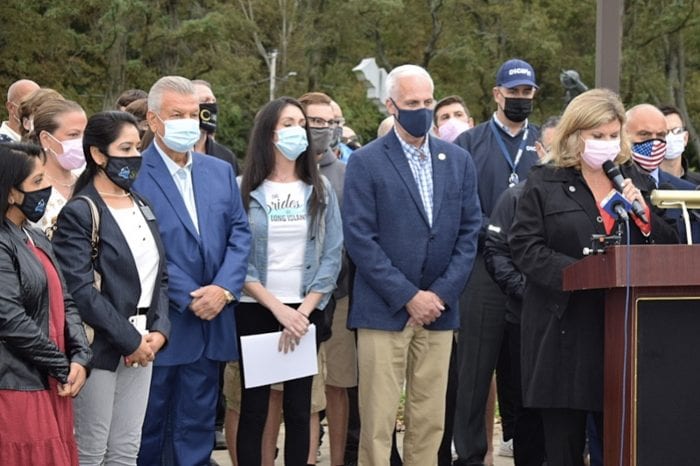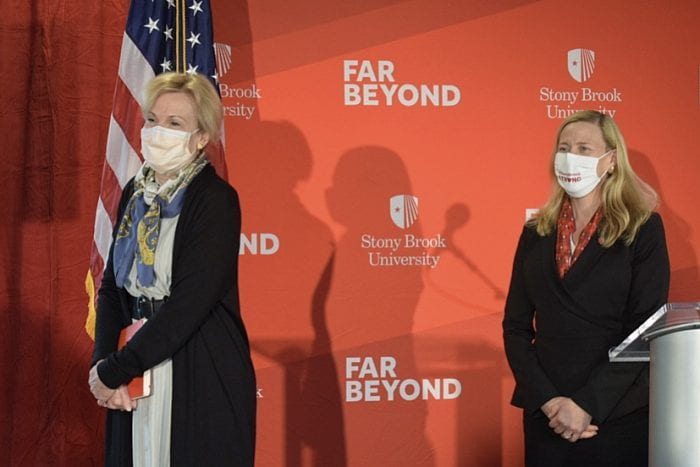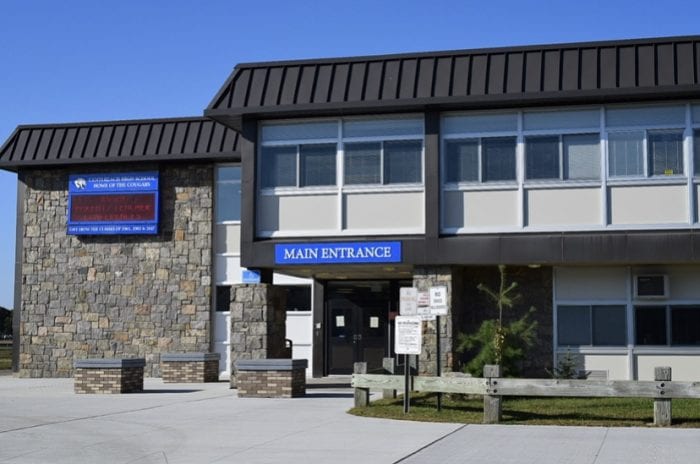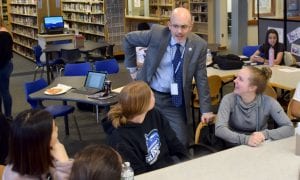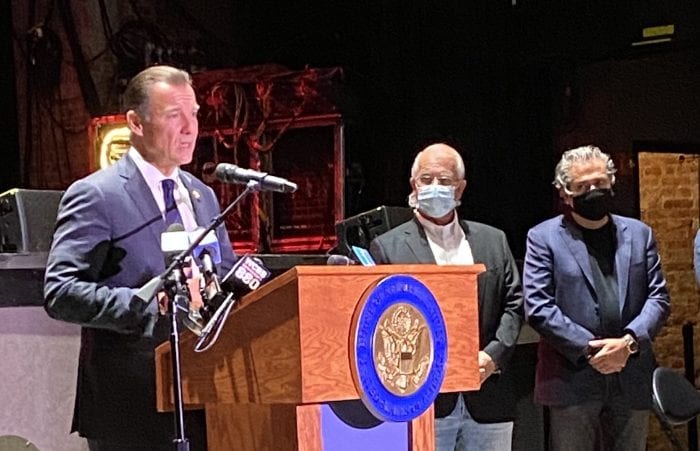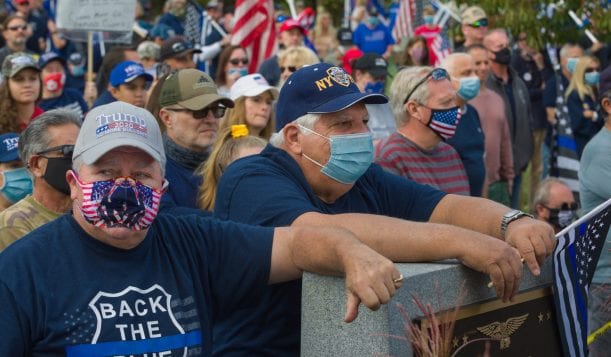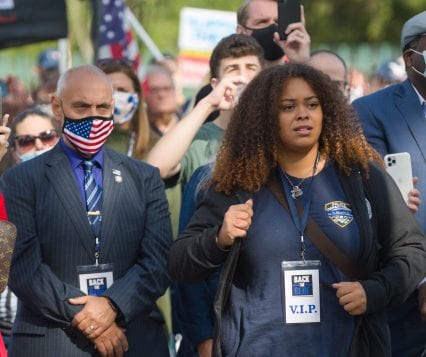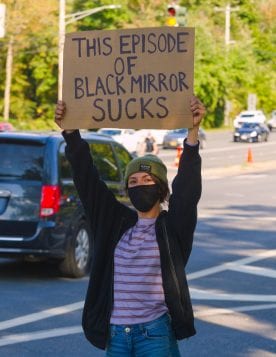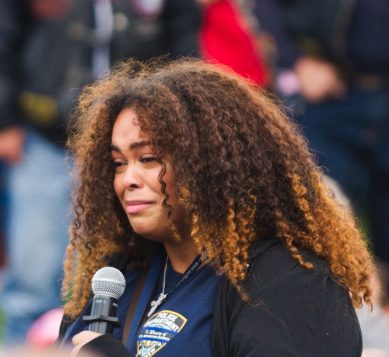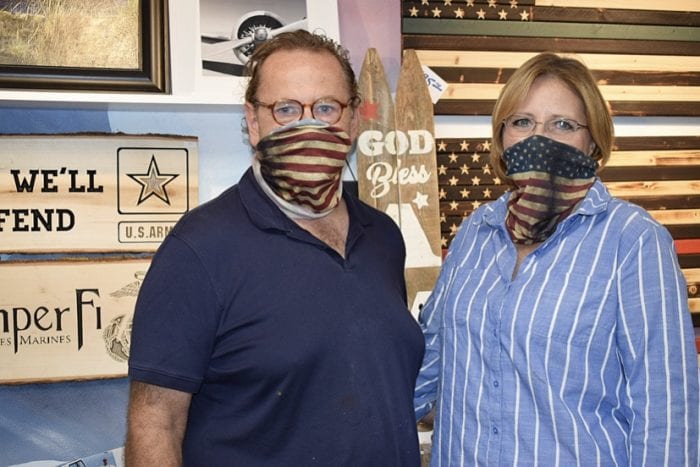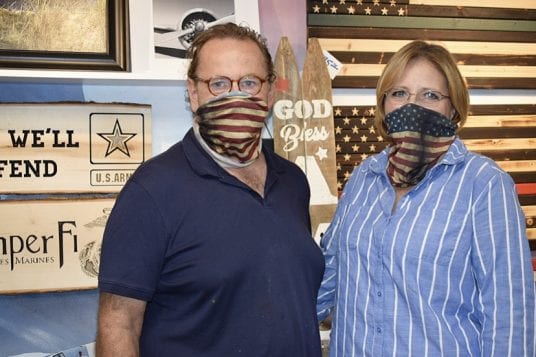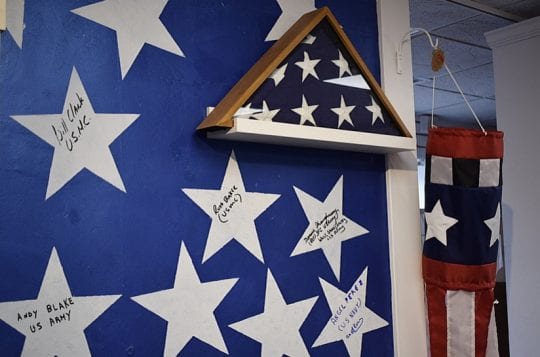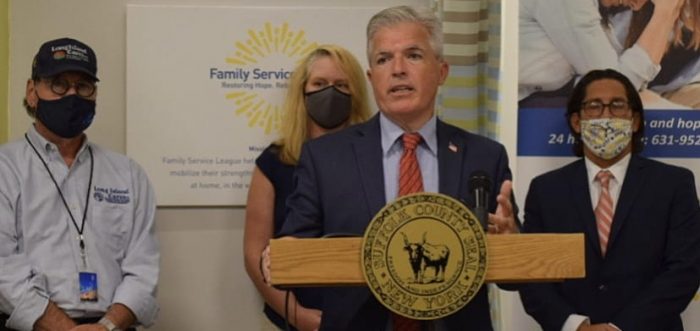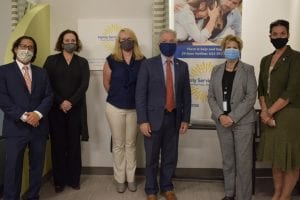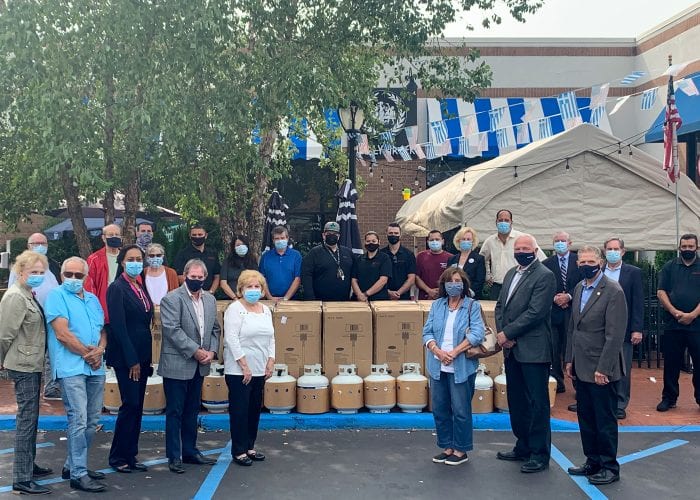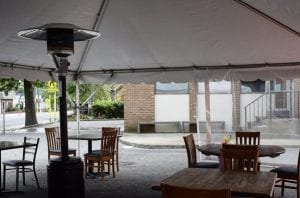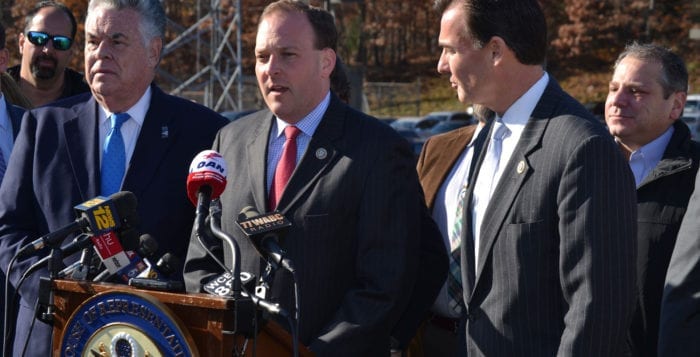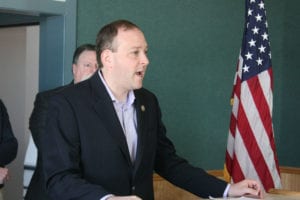Brides, business owners and elected officials all stood together outside the H. Lee Dennison Building in Hauppauge Oct. 2 begging Gov. Andrew Cuomo (D) to increase the capacity of events like weddings, Sweet 16s and other catered parties.
“By limiting us, it’s creating a more dangerous situation.”
— Gennaro Tallarico
Right now, restaurants have been allowed to operate at a 50% capacity, while catering venues are still capped at just 50 people. Those at the rally said desperate families, who have waited their whole lives to celebrate their special day, are more likely to host events elsewhere, instead of safely inside their chosen venue.
“These events haven’t stopped, these events moved,” said Gennaro Tallarico, manager of The Inn at Fox Hollow in Woodbury. “They moved into people’s homes, to their backyards. They moved into event spaces where they don’t have liquor licenses and who are not afraid to open up and break the rules. … By limiting us, it’s creating a more dangerous situation.”
Kiran Wadhwa and Indu Kaur of Port Jefferson Station’s The Meadow Club also showed their support, especially since their venue has three separate ballrooms. After having to close due to a fire in 2018, the club has been under renovation for more than two years, and then had to delay its reopening because of the pandemic.
“Not being able to open at 50% capacity would be devastating to our family business,” Wadhwa said. “We need to be able to recover the loss of two years of income, and we won’t be able to break even with 50-person events.”
Friday’s event was headed by Riverhead Town Councilwoman Jodi Giglio (R), who is also a candidate for New York State Assembly. She said the current 50-person limit these events are allowed is detrimental to not only anxious brides and grooms, but to the Long Island economy.
“Facilities with the capacity for 300, 500 and 700 guests are being forced to operate as if they were all the same size,” Giglio said. “They are going bankrupt and need to feed their families. We need the governor to let them safely serve their customers, put their employees back to work and pay their bills.”
Caterers across the state have filed a class-action lawsuit against Cuomo saying their businesses can be just as safe, if not safer. They argue that with many venues being able to hold more than 300 people, a 50% cap would still allow social distancing, with guests still being able to celebrate.
“An industry that is supposed to be happy is losing hope. It’s crushing the dreams of a fairytale wedding.”
— Jodi Giglio
With the wedding industry on Long Island generating an estimated $6 million a year in sales tax, according to a representative from Scotto Brothers, as well as being one of the state’s largest employers, no one has made a profit this year thanks to COVID-19, and many businesses are on the brink of closure.
“An industry that is supposed to be happy is losing hope,” Giglio said. “It’s crushing the dreams of a fairytale wedding. … All of our local businesses have suffered. Our message to the governor is we can do this safely, we can adjust — and flexibility is a must.”
Along with the maximum-person cap, mingling and dancing are also prohibited under the state’s executive order.
Heather Cunningham, founder of the website and online-based bridal group Brides of Long Island, said she is just seeking fairness.
“I’m not asking for a packed dance floor,” she said. “I’m asking for that moment where a father can dance with his little girl.”
“We need to look at things differently,” Suffolk County Legislator Kevin McCaffrey (R-Lindenhurst) said at the event. “They are responsible business owners. They know how to keep their customers safe.”
John Salkowsky, owner of Lindenhurst-based Silverfox, said that “catering halls are the heart and soul of our community.” Businesses, like his photography and videography service, then follow. “I hope this shines a bright light,” he said. “I hope this makes a change.”
The general feeling among owners is if things continue this way, many of them might have to close for good.
“We hope Governor Cuomo has heard our industry’s plea because we are suffering and cannot go on like this for any longer,” Wadhwa said.

